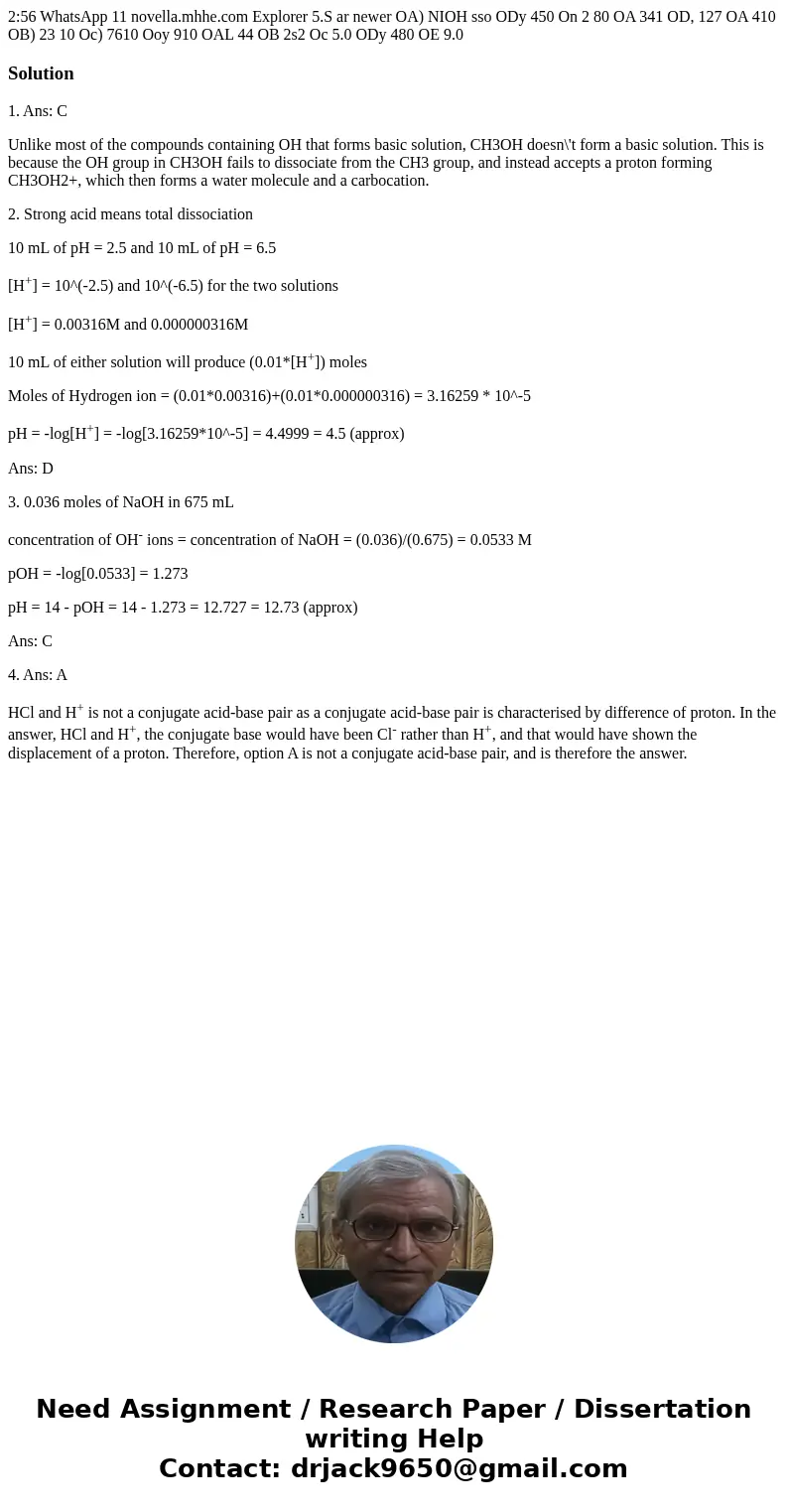256 WhatsApp 11 novellamhhecom Explorer 5S ar newer OA NIOH
Solution
1. Ans: C
Unlike most of the compounds containing OH that forms basic solution, CH3OH doesn\'t form a basic solution. This is because the OH group in CH3OH fails to dissociate from the CH3 group, and instead accepts a proton forming CH3OH2+, which then forms a water molecule and a carbocation.
2. Strong acid means total dissociation
10 mL of pH = 2.5 and 10 mL of pH = 6.5
[H+] = 10^(-2.5) and 10^(-6.5) for the two solutions
[H+] = 0.00316M and 0.000000316M
10 mL of either solution will produce (0.01*[H+]) moles
Moles of Hydrogen ion = (0.01*0.00316)+(0.01*0.000000316) = 3.16259 * 10^-5
pH = -log[H+] = -log[3.16259*10^-5] = 4.4999 = 4.5 (approx)
Ans: D
3. 0.036 moles of NaOH in 675 mL
concentration of OH- ions = concentration of NaOH = (0.036)/(0.675) = 0.0533 M
pOH = -log[0.0533] = 1.273
pH = 14 - pOH = 14 - 1.273 = 12.727 = 12.73 (approx)
Ans: C
4. Ans: A
HCl and H+ is not a conjugate acid-base pair as a conjugate acid-base pair is characterised by difference of proton. In the answer, HCl and H+, the conjugate base would have been Cl- rather than H+, and that would have shown the displacement of a proton. Therefore, option A is not a conjugate acid-base pair, and is therefore the answer.

 Homework Sourse
Homework Sourse